Almost everybody has heard the saying “the sun never sets on the British Empire.” British land holdings extended around the world, meaning that the sun was always shining on some part of that vast empire. Although the British succeeded in many conquests, they were occasionally prone to military disasters of epic proportions. Following are ten of Great Britain’s most embarrassing military blunders.
10 – The English Armada, 1589
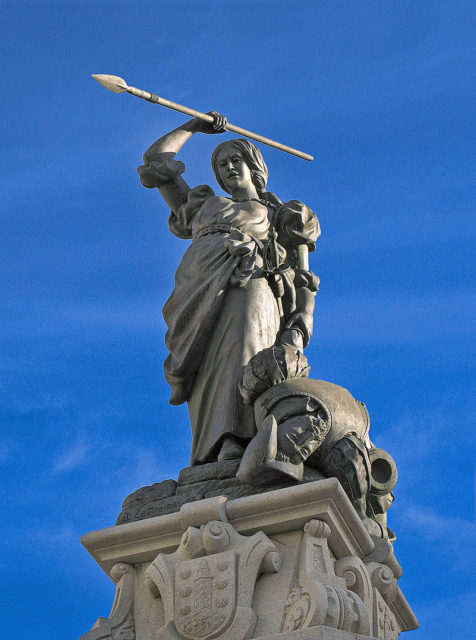
The Spanish Armada was created to invade Protestant England and overthrow the Monarchy. Phillip II of Spain, an ardent Catholic, did not recognize the rule of Elizabeth I. He intended to place Mary, Queen of Scots on the English throne. When Elizabeth had Mary put to death for conspiring against her in 1587, Phillip decided his daughter Isabella had more claim to the throne than Elizabeth because of his earlier marriage to Elizabeth’s sister, Mary Tudor. Although Isabella was not Mary’s daughter, Phillip was looking for any excuse to restore Catholic rule in England. At that time Spain was probably the most powerful country in the world, with an elite army and a formidable navy.
When Elizabeth was finally convinced that Phillip’s threats of invasion were real, she focused all of her resources on defeating him. Because of the Queen’s preparedness, the overconfidence of Spain, and typical British weather, the Armada, led by Santa Cruz, was roundly defeated. Thousands of men died, and as many as 60 Spanish ships were lost.
The following year, Elizabeth decided to create her own Armada. Having a year to prepare, Spain fortified key locations along the coast. Not taking into account the amount of warships needed, the English found themselves lacking enough power to invade. In the meantime over 10,000 English soldiers perished from disease which caused Elizabeth’s army to crumble. The only spoils of war were a few containers of wine looted from the Spanish.
9 – Medway, 1667
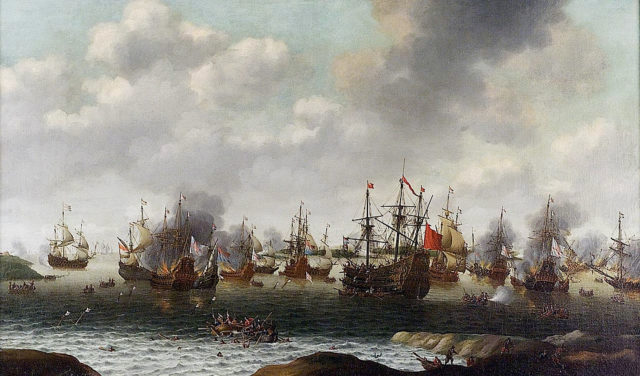
During the reign of Charles II, England found itself bankrupt due to the ravages of the Great Fire of London and the Great Plague. As the great ships of the Royal Navy sat idle with no crews, the Dutch calmly sailed unopposed into the Medway river. After destroying six of the fleet’s ships and capturing the King’s ship, the Royal Charles, which was embarrassingly towed back to the Netherlands, the Dutch feared a trap and safely withdrew from English waters.
8 – Cartagena Las Indias, 1741
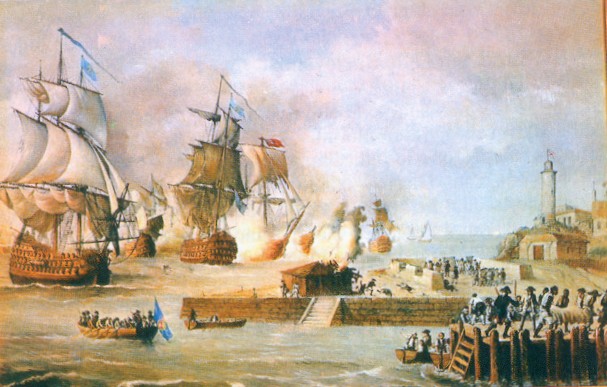
In 1741, Britain sent 140 warships with over 26,000 sailors and soldiers to the trading hub of Cartegena to overpower the Spanish, who were armed with only six ships manned by fewer than 5,000 men. The British prematurely began making medals commemorating England’s anticipated victory.
The commander of the Spanish fortress, Blas de Lezo, was a force to be reckoned with. The British had severely underestimated him; they attacked and lost over 10,000 men over the course of two months, and still did not know when to retreat. One wonders what became of the hastily made medals.
7 – The Braddock Expedition, 1755
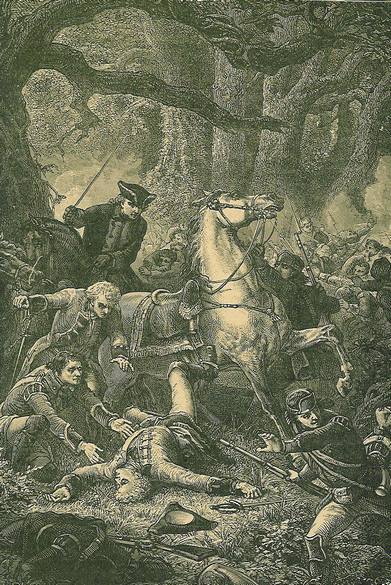
In 1755 British General Braddock aimed to march from Maryland to Pittsburgh and destroy the French fort there, with the ultimate ambition of removing the French from North America. Unfortunately, the colonists had no interest in supplying Braddock’s troops. Benjamin Franklin came forward financially and got the Army moving. The road on which they were to march was too small to accommodate Braddock’s army. Rather than finding a different path, Braddock’s troops attempted to make the road wider. This gave the French forces plenty of time to reinforce, helping to prolong the Seven Years’ War in North America.
6 – The Battles of Saratoga, 1777
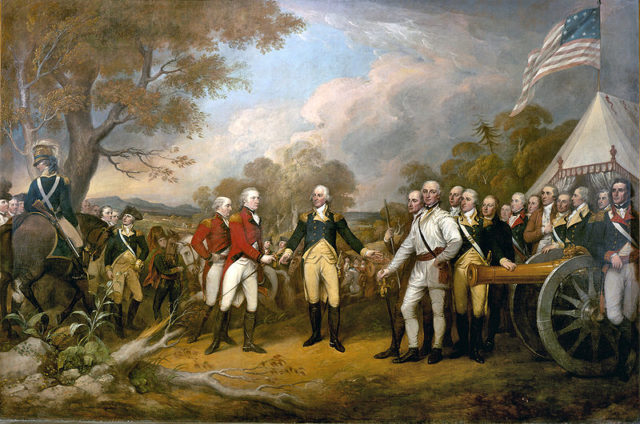
In 1777 two British forces commanded by General Johnny Burgoyne and General William Howe were to meet in Albany, New York and march to Philadelphia. Instead of taking a route across Lake Champlain, Burgoyne led his troops overland, taking weeks to get through the forests. Howe, however, had decided to go straight to Philadelphia without informing anyone. When Burgoyne came to Albany, he ran straight into an army of waitingAmericans. Believing that Howe’s army was on the way, Burgoyne was able to force a retreat of the Americans but failed to take his army any further. Waiting for Howe, the men were running out of supplies, forcing Burgoyne to surrender. The French then joined the side of the colonists, causing the tide of the war to turn in the Americans’ favor.
5 – The Battle of Isandlwana, 1879
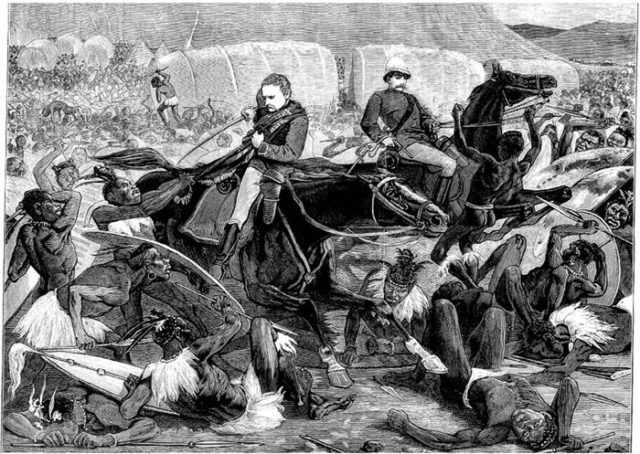
Lord Chelmsford, governor of British-owned South Africa, decided he wanted to enlarge British holdings and set his sights on the Zulu Nation. In 1879, based on less than reliable intelligence, Chelmsford gathered an army to invade. Part of his army camped at Isandlwana while the majority headed toward what they believed was the main base of the Zulu.
It didn’t take long for a force of 20,000 Zulu warriors to attack the camp at Isandlwana. Forming a firing line, the British troops were able to hold off the attackers for a time, but as the soldiers became weary and ammunition dwindled the Zulu were able to take over the camp.
Although Chelmsford had ignored warnings about how capable the Zulus were at warfare and his arrogance had cost the lives of the majority of his troops, he was the recipient of honors and received a promotion.
4 – The Battle of Majuba Hill, 1881

In 1881 the Dutch Boers had populated the area of Transvaal in South Africa. The British still wanted a presence in South Africa, and this caused the Boers to declare independence and get ready for a fight.
British General George Pomeroy-Colley wanted to drive the Boers away from Laing’s Nek mountain pass. Although the British occupied Majuba Hill, which was a very short distance from Laing’s Nek, General Pomeroy-Colley didn’t feel the need for any fortifications. With only 400 British soldiers to defend Majuba Hill the Boers, who were quite accomplished marksmen, had no problems taking the hill. In the fight, the Boers lost only six soldiers and killed or captured the entire British force, including General Pomeroy-Colley.
3 – The Battle of Spion Kop, 1900
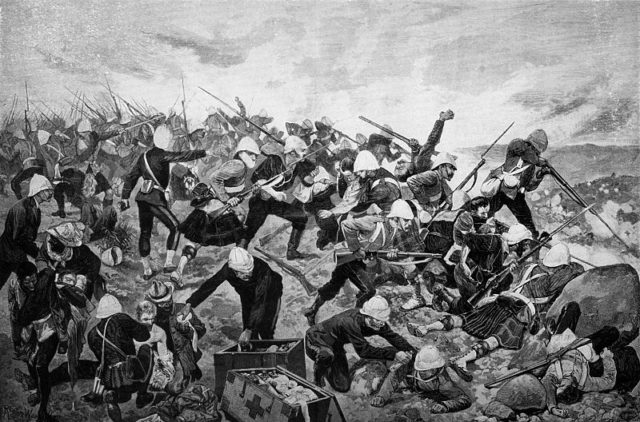
Although the Boers had given the British a sound beating, when gold was discovered on Boer land in 1900, the British decided it was worth trying to take over again.
Unfortunately, the results weren’t much different. In Ladysmith, a major battle broke out with the British troops believing they had taken Spion Kop Hill. They thought they had been successful because dense fog blocked their vision. When they were finally able to make out the surrounding area they found that the Boers were waiting for them on higher ground. In spite of losing over 1,600 men, the British recovered and were able to triumph in the Second Boer War.
2 – The Fall of Singapore, 1942
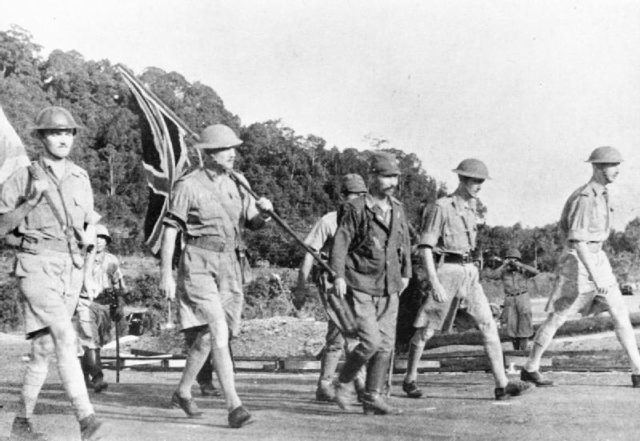
The British naval base at Singapore, while lacking in defense, was christened ” the Gibraltar of the East” in the hope that this would strike fear into the Japanese forces. In 1942 there was a shortage of British troops defending the base from a land attack. Although the British force was larger, they were not as disciplined or as well-trained as the Japanese. Not only did the Japanese mount an overland attack, but they also attacked from the sea, quickly driving the British soldiers to escape to the city. All in all the Japanese were able to capture 80, 000 prisoners, upsetting Sir Winston Churchill who had just one week earlier remarked, “[the] battle must be fought to the bitter end at all costs.”
1 – Operation Jubilee, 1942
The Dieppe Raid of August 1942 (codenamed Operation Jubilee) was an invasion that could be compared to D-Day. However, it was not nearly as well armed or organized. The assault on the northern coast of France against the Germans lasted only six hours before the Allies were forced to retreat. No artillery support to speak of and minor naval support led some to believe the plans for the raid had been leaked to the Germans.
With uncoordinated attacks and unexpected terrain, the already entrenched Germans had no problem overpowering the Canadian and British forces. Within nine hours the Allied forces had lost over 3,000 men with most being captured and a third being killed. Due to the ineptitude of the British forces, some feel that Dieppe resembled one of the greatest blunders of the Second World War.
